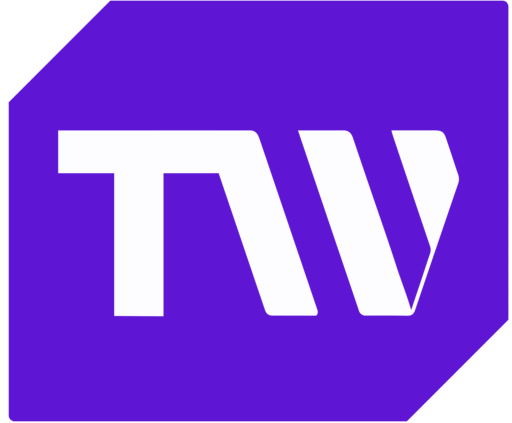Tech Talent 2.0: The Future of Remote Work and the Gig Economy
Tech Talent 2.0: The Future of Remote Work and the Gig Economy
In the wake of the digital revolution and a global pandemic, the workplace has undergone a seismic shift. Remote work, once considered a perk, has become the norm for millions. Simultaneously, the gig economy has expanded, offering flexibility and autonomy to a growing number of professionals. Together, these trends have created what we now call Tech Talent 2.0, where the future of work is not just about where we work but how and why we do it.
This article delves into the transformation of remote work and the gig economy, exploring how technology, evolving workforce preferences, and global connectivity are shaping the future of employment.
The Remote Work Revolution.
1. The Rise of Distributed Teams.
The pandemic accelerated the adoption of remote work, but its staying power lies in its benefits. Companies like GitLab and Automattic have demonstrated the viability of fully remote teams. By eliminating geographic barriers, businesses can tap into global talent pools, attracting the best minds irrespective of location.
Remote work is no longer a temporary solution. According to a McKinsey study, 58% of employees now have the option to work remotely, with many preferring hybrid arrangements. For tech professionals, this has opened doors to lucrative opportunities with companies halfway across the globe.
2. The Role of Technology.
Technological advancements have made remote work seamless. Platforms like Slack, Zoom, and Trello facilitate communication, collaboration, and project management, ensuring that teams stay productive and connected. Meanwhile, advancements in cybersecurity and VPNs safeguard sensitive data, addressing concerns about remote work vulnerabilities.
Virtual reality (VR) and augmented reality (AR) are also entering the picture, promising immersive virtual offices where remote workers can interact as if they were in the same room. This innovation will bridge the gap between physical and digital workplaces.
The Gig Economy: Redefining Employment.
1. Flexibility Over Stability
The gig economy has redefined what it means to have a career. Platforms like Upwork, Fiverr, and Toptal enable tech professionals to freelance, offering their skills to multiple clients simultaneously. From app developers to UX designers, gig workers value flexibility over the traditional 9-to-5 grind.
A study by Statista estimates that by 2027, over 50% of the U.S. workforce will participate in the gig economy. For many, freelancing isn’t just a side hustle it’s a lifestyle choice.
2. The Role of Digital Marketplaces.
Digital platforms have democratized access to opportunities, connecting skilled workers with clients worldwide. These platforms offer more than just job listings; they provide tools for billing, project management, and client communication, making freelancing viable and attractive.
However, challenges remain. Gig workers often face job insecurity and lack benefits like health insurance or retirement plans. As this economy grows, governments and organizations are exploring ways to offer protections while preserving the gig economy’s flexibility.
Synergy Between Remote Work and the Gig Economy.
1. The Blurring of Lines
Remote work and the gig economy are no longer distinct entities. Many remote workers now operate like freelancers, juggling multiple projects for different employers. Similarly, gig workers often function as integral parts of companies, contributing remotely and collaborating with in-house teams.
This synergy benefits both employers and workers. Companies can scale their workforce up or down based on project demands, while workers enjoy the freedom to choose projects that align with their passions and skills.
2. The Role of AI and Automation.
Artificial intelligence (AI) is amplifying the potential of both remote work and the gig economy. AI-driven tools streamline processes like recruitment, skill matching, and performance tracking. For instance, algorithms can analyze a freelancer’s portfolio and recommend jobs tailored to their expertise, reducing the time spent searching for opportunities.
Automation also enables workers to focus on high-value tasks. By handling repetitive chores, AI allows tech talent to invest their energy in creativity, problem-solving, and innovation.
Challenges and Opportunities in Tech Talent 2.0.
1. Bridging the Digital Divide
While remote work and the gig economy offer incredible opportunities, they also expose disparities. Workers in regions with limited internet access or outdated technology may struggle to compete in the global marketplace. Governments and private organizations must invest in infrastructure to ensure equitable access.
2. Building Community in a Remote World.
Isolation is a common concern for remote workers and freelancers. Without the camaraderie of a traditional office, professionals may feel disconnected. Companies can address this by fostering virtual communities and encouraging regular check-ins to maintain morale and engagement.
Freelancers, on the other hand, can leverage online forums, coworking spaces, and industry meetups to build networks and combat loneliness.
3. Rethinking Workforce Policies
As Tech Talent 2.0 takes hold, policies must evolve to protect workers. Governments are exploring ways to classify gig workers to ensure fair compensation and benefits. At the same time, companies are experimenting with hybrid models that combine the flexibility of freelancing with the stability of full-time employment.
The Future of Work: Predictions for Tech Talent 2.0.
1. Hyper-Specialization
The demand for niche skills will grow. As technology becomes more sophisticated, companies will seek experts in areas like blockchain development, AI ethics, and quantum computing. Freelancers and remote workers who invest in continuous learning will thrive in this competitive landscape.
2. Virtual Global Offices
The next evolution of remote work may involve fully virtual offices powered by VR. Imagine donning a headset to attend meetings, collaborate on whiteboards, or even join virtual coffee breaks. This innovation will make remote work feel less remote.
3. The Rise of Digital Nomadism
Digital nomads—professionals who work remotely while traveling—will become a larger part of the workforce. Countries like Portugal and Estonia are already offering digital nomad visas, recognizing the economic benefits of attracting these workers.
4. Emphasis on Well-being
As boundaries between work and life blur, companies will prioritize employee well-being. Flexible schedules, mental health resources, and wellness programs will become standard to prevent burnout and promote productivity.
Conclusion
Tech Talent 2.0 is more than a buzzword, it’s a glimpse into the future of work. Remote work and the gig economy are breaking down traditional employment barriers, offering unprecedented opportunities for flexibility, creativity, and global collaboration.
For tech professionals, this new landscape is both a challenge and an invitation to innovate. By embracing emerging technologies, honing specialized skills, and navigating the evolving workplace with resilience, they can thrive in this dynamic environment.
The future is here, and it’s remote, flexible, and brimming with potential. Are you ready to be a part of it?


